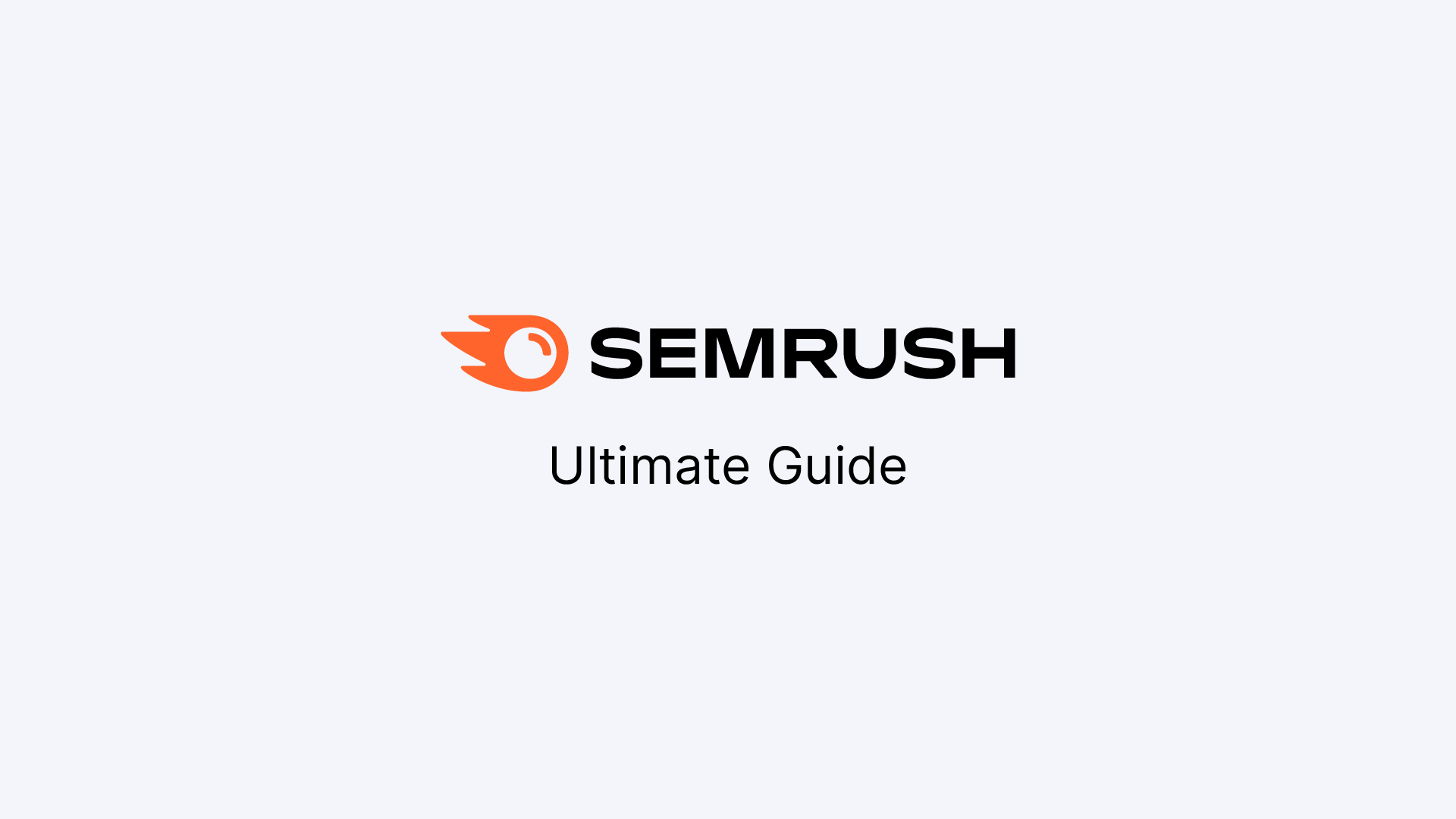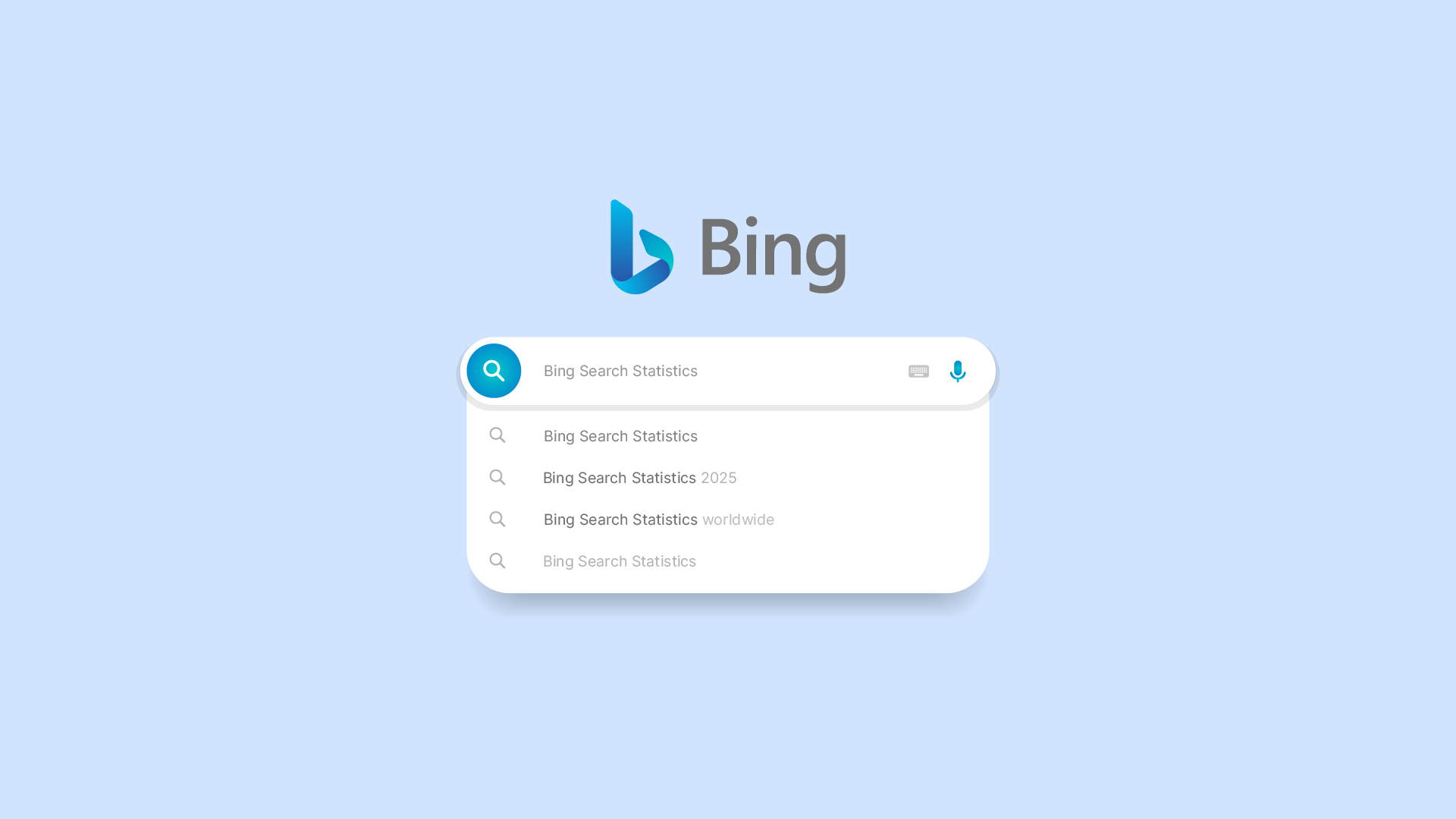|
Getting your Trinity Audio player ready...
|
Do you want to increase your website’s visibility in search engine results? Are you looking for more organic traffic from your target audience? If so, then it’s time to create a comprehensive SEO strategy.
Search engine optimization (SEO) is the process of optimizing websites and web pages with relevant keywords and content so that search engines can find them more easily. SEO helps make sure that when people search for specific terms or topics, websites are displayed as highly as possible in the search engine results page (SERP).
Creating an effective SEO strategy requires research, planning, implementation and monitoring. But if done right, implementing a well-crafted SEO strategy can bring huge results in improved website traffic and conversions.
In this post , we’ll walk you through the eight steps to creating an effective SEO strategy.
Disclaimer: Note that some links and banners in this article are affiliate links, which provide us with a small commission if you complete purchases via those links. These are merely good business tools you can use together with these small business ideas. You can read the affiliate disclosure of our privacy policy in the footer.

How to Create an SEO strategy in 8 Steps
An effective SEO strategy is essential for any website looking to increase organic search traffic and rankings. It’s a detailed plan of action that helps you focus on the tasks that will bring in more visitors and revenue from SEO.
Here is how to create an effective SEO strategy in 8 steps:
1. Review your current SEO performance
Benchmarking your current SEO performance is an essential first step in setting goals and tracking results. Identifying the top five online competitors is key to understanding where you stand in relation to them.
Logging these competitors into a template document allows you to compare metrics like keyword rankings, organic traffic, and backlinks.
This data can be used to identify valuable keywords that your competitors currently rank for, but you don’t. Make note of your top five keyword opportunities in your template so that you can track progress over time.
Analytics are also important when benchmarking SEO performance. SEMrush’s tool to measure progress and create an ongoing SEO plan. By benchmarking your current SEO performance, you will have a better understanding of what works and what doesn’t, allowing you to make informed decisions about how best to optimize your website for success.
To understand and get insight into your SEO performance you will need to observe three things:
- Organic traffic
- Keyword ranking
- Backlinks
Organic traffic is the number of visitors that come to your website from search engine results. Keyword ranking is the position of your website in the SERP for a particular keyword. Backlinks are links from other websites that point to your website.
Keyword rankings are important because the higher the rankings the more organic traffic for your pages. You can find keyword rankings in the same domain overview screen together with backlinks (Linking domains and total links).
From these keywords, you rank for you can derive the position on search rankings, the volume of each keyword, and the amount of traffic they bring to your website.
SEMrush allows you to export the keyword report so you can closely look at what you need to focus on.
The Backlinks give your site a vote of confidence from other sites that are similar to yours, meaning they contribute to the authority you have in your niche. SEMrush’s backlink analysis tool allows you to see matrices such as the authority score of your domain, the domains, and pages linking to your, and the total number of links pointing to your website.
2. Research your competitor’s SEO Strategies
It’s important to understand what your competitors are doing in terms of SEO. This will help you identify opportunities and areas where you can improve.
You can use tools like SEMrush to research your competitor’s SEO strategies. The tool allows you to compare the keyword rankings, organic traffic, and backlinks of up to five competitors at once.
You can also use the tool to analyze their backlink profile and identify the domains that link to them.
First, you will need to identify your competitors, you can identify them by searching for a keyword you want to rank for and analyzing the top 10 results on google.
You can find your top 10 competitors by going to SEMrush’s organic research tool and entering your domain. You may find that your business competitors may not be on this list. This is because SEO competitors are the website that is ranking for keywords you want to rank for.
Next, you will need to identify your competitors’ most valuable keywords.
Identify Keywords Valuable to your Competitors
Finding valuable keywords that your competitors rank for but you don’t is essential to staying ahead of the competition. Semrush’s Keyword Gap tool can help you compare your domain with competitors’ domains and see the keyword overlap. This tool allows you to download a CSV report which will show higher-volume keywords that are easier to rank for.
Leveraging the power of keyword search software can help identify the right keywords for content, as well as read through competitors’ content to identify the best keywords. Integrating these best keywords in content helps rank higher and increase visibility, giving your business an edge over its competitors.
To find valuable keywords, start by using Semrush’s Keyword Gap tool to compare your domain with competitors’ domains and see what kind of keyword overlap there is. Downloading a CSV report will give you access to higher-volume keywords that are easier to rank for. You can also use keyword search software to identify the right keywords for your content.
Audit Your Competitors’ Backlink profile
Backlinks are an essential part of SEO and can help you rank higher in search engine results. A backlink gap audit is a great way to identify websites that are linking to your competitors but not to you.
Semrush’s Backlink Gap tool allows you to compare each of your competitors’ backlink profiles and find referring domains that send backlinks to them. This can be used to identify potential link opportunities for your website.
When conducting an audit, it is important to export a report of the backlinks for further analysis. This will allow you to reach out to target websites for backlinks and optimize your website’s SEO performance. Audits should be conducted between two to four times a year in order to ensure website efficiency and visibility.
Additionally, technical SEO, on-page SEO, and content optimization should all be analyzed during an audit. Setting key performance indicators (KPIs) is also important as they provide measurable values that indicate SEO effectiveness and whether a goal has been achieved.
3. Set SEO Goals and Key Performance Indicators
Setting goals and KPIs is an essential part of creating an effective SEO strategy. Common KPIs to track include organic traffic, keyword rankings, backlinks, average CTR, and coverage issues. Monitoring these KPIs can help you evaluate success and determine if adjustments need to be made.
For B2B companies, success is measured by lead quantity and quality, while B2C companies measure success by sales generated from organic traffic. It is important to identify the key moment in the customer journey where a conversion or email might happen.
This could be after a conversation with a sales rep or a demo of the product, or right on a company’s website. By setting clear goals and tracking relevant KPIs, businesses can ensure that their SEO strategies are successful in driving conversions and increasing visibility online.
Average CTR
Average CTR, or click-through rate, is an important metric for website owners to track. It measures the percentage of people who click on a website after seeing it in Google search results. This metric is used by Google in its ranking algorithm, so tracking it can help boost rankings and visibility.
The easiest way to track CTR is by using Google Search Console and exporting a report. This will provide detailed information about how many people are clicking on your site from Google search results, as well as which keywords they’re using to find it.
By monitoring this data over time, you can identify trends and make changes that will improve your CTR and overall rankings. Additionally, tracking CTR can help you understand which content resonates with your audience and what needs improvement.
Coverage Issues
Coverage issues are a common problem for website owners, as they can prevent search engines from reaching certain pages on their site. This can be especially problematic if the page contains important content that needs to be indexed in order to rank higher in search engine results.
Regularly tracking coverage issues is essential in order to ensure that all of your pages are being indexed and that no error pages are slipping through the cracks.
In addition to tracking coverage issues, it’s also important to optimize your content according to user intent. This means writing attention-grabbing content that is fun and engaging while still keeping your goals and search intent in mind.
High-quality content will attract more traffic and leads, which will result in higher conversion rates. By taking the time to properly optimize your content, you can ensure that your website ranks higher in search engine results and reaches more potential customers.
4. Audit Your Site’s Existing Content
A content audit is an essential step in any SEO campaign. It helps you identify areas of improvement and ensure that your website is performing optimally. During a content audit, you should analyze existing content, technical SEO, on-page SEO, and other metrics to determine how well your website is doing.
You should also track key performance indicators (KPIs) such as search engine rankings, page loading times, and marketing decisions to measure the success of your SEO campaigns. KPIs should be realistic and aspirational so that they can be used to accurately measure progress.
Metrics are also important for tracking progress and comparing it against goals. By conducting a content audit regularly – between two to four times a year – you can ensure that your website is always running efficiently and effectively.

Find Low-Performing Pages to Delete or Redirect
Content decay analysis is an important process for website owners to identify low-performing pages and take action to improve their performance. By using Google Analytics, website owners can identify pages that are no longer receiving as much traffic as they once did and take steps to either delete, optimize, or 301 redirect the page.
Optimizing existing content can be beneficial in improving the performance of a page while combining multiple pieces of content into one post can help optimize and improve the usefulness of a page. Additionally, deleting content that is outdated or irrelevant is a good way to reduce low-performing pages.
Conducting a content decay analysis is necessary to ensure website performance and minimize zombie pages. Digital marketing or SEO professionals have the tools and knowledge to quickly and effectively conduct a content decay analysis.
This process can help increase traffic, link building, and ROI from a website by improving its conversion rate. Identifying pages with declining traffic can be a time-consuming process but it’s worth it in the long run.

Evaluate your content traffic
Evaluating content based on traffic is an important part of any SEO strategy. Semrush’s Organic Research tool can be used to measure organic traffic and identify which pages are performing well and which need improvement. By sorting pages by organic traffic, you can export the list for further analysis and use overall performance as a benchmark to identify content that is not working well.
Tracking organic traffic growth, keyword rankings, and conversions from organic traffic are key indicators of SEO success. Common KPIs include average time on page, bounce rate, top landing pages attracting organic traffic, number of indexed pages, and links growth.
Technical setup, content optimization, and link building are essential for getting a website into the search results; monitoring these efforts helps improve strategy further. With the right tools in place, you can evaluate your content based on traffic to ensure your website is reaching its full potential.
Improve & Relaunch your content
Improving and relaunching content is an important part of any successful digital marketing strategy. It involves analyzing existing content to identify areas for improvement, brainstorming ideas for improving the content, implementing changes, and finally relaunching the content.
This process can help ensure that your website or other digital platforms are up-to-date with current industry trends and best practices.
When improving and relaunching content, it’s important to find and replace dead links and old images. Additionally, you should update the content to reflect changes in the industry, as well as optimize on-page SEO.
Doing so will help ensure that your website or other digital platforms are optimized for search engine rankings and user experience. Furthermore, it can also help increase traffic to your website or other digital platforms by making them more visible in search engine results pages (SERPs).

Add Visual Elements to your content
Adding visual elements to content can be a great way to improve the reading experience. Visuals such as graphs, charts, and infographics can help simplify complex concepts or processes, making them easier to understand.
Images and GIFs can also be used to tell a story in an engaging way. Visual elements can draw viewers in and give videos personality. Examples of visuals that could be used include pictures of yourself or objects related to the topic.
Using visual elements is a great way to make content more interesting and engaging for readers. Not only do visuals help break up text-heavy content, but they also provide an opportunity for readers to interact with the material in a different way.
By adding visual elements such as graphs, charts, infographics, images and GIFs, you can create an immersive experience that will keep readers engaged throughout the entire piece of content. Visuals are also great for helping people remember key points from your content since they are often more memorable than just words alone.
Update Everything
Keeping up with the ever-changing world of SEO can be a daunting task. With Google constantly rolling out algorithm updates, it’s important to stay on top of the latest trends and changes in order to ensure your website is optimized for search engine success.
One of the most important aspects of keeping your website up to date is finding and replacing dead links and old images. This will help keep your content fresh and relevant, as well as improve user experience. Additionally, updating content to reflect changes in the industry is essential for staying competitive.
Google’s BERT (NLP) and E-A-T (expertise, authoritativeness, and trustworthiness) updates have had a major impact on SEO practices.
These updates focus on improving natural language processing capabilities as well as emphasizing expertise, authoritativeness, and trustworthiness when ranking websites. As such, it’s important to make sure that all content on your website meets these criteria in order
Make It Easier To Read
Making your content easier to read is essential for providing a good user experience. When writing, it’s important to use language that is easy to understand and write with your audience in mind.
Additionally, focusing on evergreen SEO items such as page titles, meta descriptions, and headings can help improve the visibility of your content.
Page load time is also an important factor when it comes to making content easier to read. Search engines use page load time as an indicator of quality, so it’s important to ensure that images are optimized for size and speed.
Google’s Page Speed Insights Tool can provide suggestions on how to improve page speed and make your content easier to read. By following these tips, you can create content that is both easy to read and optimized for search engine visibility.
Write more comprehensive content
Creating comprehensive content is an effective way to provide readers with a complete answer to their problem or question. It can be helpful to consider turning a post into an ultimate guide that covers an entire topic in-depth.
This type of content can help readers gain a better understanding of the subject, as well as give them the resources they need to make informed decisions.
A content audit is a great way to ensure that your content covers all aspects of the topic and provides readers with the most up-to-date information. This step-by-step guide for conducting a content audit can help you identify any gaps in your existing content and determine what needs to be added or updated.
This process will also help you identify any areas where more research is needed and create a plan for creating new content that covers those topics. By taking the time to conduct a thorough audit, you can ensure that your content covers all aspects of the topic and provides readers with the most accurate information available.
5. Build Out Topic Clusters
Content marketing is an effective way to create evergreen content that can generate organic traffic for years to come. With the introduction of Google’s Hummingbird algorithm, the focus has shifted from target keywords to topics in order to better understand user intent.
A carefully tailored content strategy should consider user intent and create relevant content at each stage of the sales funnel. This includes blog posts, email newsletters, social media content, guides, video content, webinars, case studies and podcasts.
Video makes up more than 80% of consumer internet traffic and 86% of marketers claim it has helped them generate more leads on social channels.
When building out topic clusters for a website or blog, it is important to start by choosing a topic to rank for and conducting keyword research. Once this is done, group subtopics with similar intent together in order to create a comprehensive cluster that covers all aspects of the chosen topic. This will help ensure that your content is optimized for search engines while also providing valuable
Choose the main topic (Pillar Topic) you want to rank for
When it comes to building a cluster, the first step is to choose a topic or “pillar” that you want to rank for. This should be broad enough to encompass multiple subtopics and narrow enough that you can focus on it.
Semrush’s Topic Research tool can help with this process by providing ideas for potential subtopics related to the chosen pillar topic. Each card in the tool provides more information such as top headlines, questions around the topic, and related searches. You can also sort cards by search volume, difficulty, or topic efficiency to save time when deciding which card to work from.
Once you have chosen your topic, it is important to identify keywords that will help with visibility and ranking high. Leverage keyword search software to identify the best keywords for content and read through competitor’s content to see what they have used.
Integrating these keywords into your content is essential for improving visibility and ranking higher in search engine results pages (SERPs). Additionally, exporting the list of keywords can help you create a content plan and ensure that all topics are covered.
Do keyword research
Conducting keyword research is an important step in optimizing content for search engine visibility. It can help prioritize content to write, uncover different content formats, and identify high-volume question keywords and featured snippet opportunities.
Keyword research is essential for understanding what terms your target audience is searching for. By combining SEO and content strategies, you can create a list of relevant keywords to use in social media, video content, and blog posts. Utilizing these keywords from research can help increase the visibility of your content to the target audience.
When conducting keyword research, it’s important to consider both short-tail and long-tail keywords. Short-tail keywords are more general terms that have higher search volume but also higher competition.
Long-tail keywords are more specific phrases that have lower search volume but also lower competition. Additionally, researching related topics and synonyms can help you find additional keyword ideas that may be useful for your content strategy. With the right keyword research tools, you can uncover valuable insights to help you create content that is optimized for search engine visibility.
Decide on content formats
Content formats are an important part of any content strategy, as they can help to optimize visibility and provide the best user experience. SEO can be a great tool for helping to determine which content format is likely to yield the best results.
Semrush’s Keyword Magic tool is a great resource for finding suggestions for specific content formats, as it allows users to drill down and use keyword modifiers to find more targeted ideas. Additionally, the Group filter makes it easy to start building out keyword-focused FAQ pages.
Incorporating SEO into content strategy can also help ensure that the structure and format of content is optimized for search engine visibility. Structural guidelines from SEO can help provide guidance on how best to organize content in order to maximize its potential reach and impact.
By taking advantage of these tools, businesses can ensure that their content is structured in a way that will maximize its visibility and effectiveness.
Outline Your Pillar (Topic) & Cluster Structures
Creating an organized site structure is essential for any website. Outlining your pillar and topic clusters helps to ensure that all the content on your website is properly organized and easy to navigate.
To begin, make a big circle with all your topics (pillars) and smaller circles around it with all the subtopics you’ve uncovered. This will help you visualize how everything fits together. Once you have this basic structure in place, leverage existing content to fill in the blanks.
If there are any gaps, conduct keyword research to determine what topics need to be covered and group subtopics with similar intent together.
Finally, choose a topic or two that you want to rank for in order to maximize visibility and engagement on your website.
By following these steps, you can create an effective site structure that will help improve user experience and SEO performance.
6. Work on your On-Page SEO
On-page SEO is an essential part of any website’s success. It involves optimizing web content for both search engines and users, so that your site can be found more easily and rank higher in search engine results pages (SERPs). To improve your on-page SEO, you should use an SEO tool to audit your website’s current status.
Google still heavily weighs traditional SEO elements when it comes to ranking websites. This means that having a keyword in your title tag or meta description can make a big difference in how well your website ranks for that keyword.
Additionally, making sure that your content is relevant to the topic at hand and easy to read will also help improve your on-page SEO. By taking the time to optimize these elements, you can ensure that your website has the best chance of appearing at the top of search engine results pages (SERPs).
Semrush’s On-Page SEO Checker is a great tool for this purpose. It will analyze data from SERP features, competitor content, and related keywords to help you identify areas where you can make improvements.
Some of what you can build your internal links to ensure google can understand your website structure.
7. Identify and Fix Technical SEO Issues
Technical SEO is an important part of any website’s success. It helps search engines find, crawl, understand, and index your pages so that they can be ranked higher in the search engine results pages (SERPs). Technical SEO involves optimizing a website for factors such as JavaScript, XML sitemaps, and other elements that help make it easier for search engines to access content.
Technical SEO is to find and fix any issues that may be preventing your website from being properly indexed by search engines. This includes checking for broken links, ensuring all images have alt tags, making sure all page titles are descriptive and relevant to the content on the page, and more.
Additionally, you should also check for any duplicate content or canonicalization issues that could be affecting your rankings. By taking the time to identify and address any technical SEO issues on your site, you can ensure that it is properly optimized for maximum visibility in SERPs.
8. Work on Your Off-Page SEO
Off-page SEO is an important part of any SEO strategy. Building backlinks is the most important part of off-page SEO, as it helps to increase your website’s ranking in search engine results pages (SERPs).
To make the process easier and more efficient, Semrush’s Link Building Tool can be used to prioritize efforts and manage outreach campaigns. This tool allows users to customize their emails with default information and formatting, as well as choose which emails to send. Additionally, it enables users to quickly and easily build high-quality backlinks.
9. Analyze & Refine Your Strategy
Analyzing and refining your SEO strategy is essential for driving growth. Setting goals and KPIs to measure success is the first step in this process, as it allows you to track progress and ensure that you are on track.
Additionally, a competitor analysis can be used to gain insight into their products, sales, and marketing tactics. This can help you reverse engineer the most successful elements into your own SEO strategy.
Furthermore, an SEO analysis should assess your competition’s keywords, backlinks, and content in order to identify long-tail keywords that can help increase rankings in search engine results.
Software tools such as Ahrefs, SEMrush, and Moz can be used to analyze competition and create a keyword strategy that includes both popular and less popular keywords. By regularly evaluating your SEO campaigns with these strategies in mind, you will be able to refine your approach for maximum ROI.
Key Tips to Create a successful SEO Content Strategy in 2023
Creating a successful SEO content strategy in 2023 is essential for businesses to gain visibility in a competitive market. SEO optimization should be considered when creating a content marketing plan, as it helps people find your content on search engines.
Combining SEO with your content strategy can help drive traffic, leads, and conversions. To ensure success, there are five key tips to consider when creating an effective SEO content strategy.
The first tip is to research keywords that are relevant to your business and target audience. This will help you create content that is optimized for search engine rankings and attract the right kind of visitors to your website. Secondly, optimizing titles and meta descriptions can also help improve visibility on search engine results pages (SERPs).
Thirdly, creating quality content that is engaging and informative will keep readers interested and increase the chances of them returning to your website. Fourthly, building backlinks from other websites can help boost your website’s authority and rankings in SERPs. Finally, tracking performance metrics such







